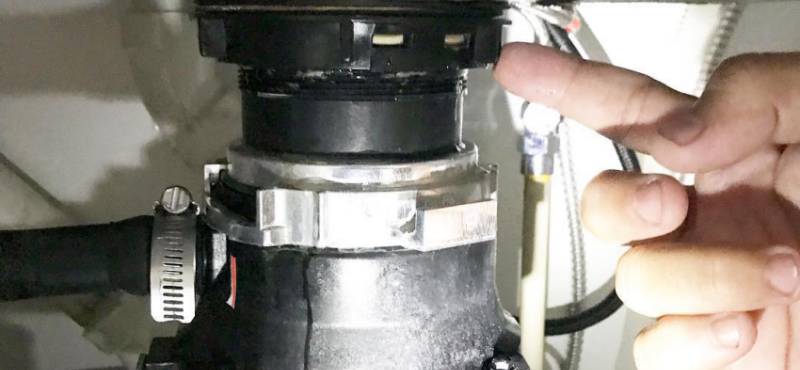Tested Ways to Fix a Leaking Waste Disposal Unit
Tested Ways to Fix a Leaking Waste Disposal Unit
Blog Article
The author is making a number of good points related to Why Is as a whole in the article directly below.

Waste disposal unit are essential cooking area devices that aid in taking care of food waste effectively. However, a dripping garbage disposal can be a discouraging and untidy issue to manage. The good news is, many leaks can be fixed easily with a few simple steps. In this article, we will talk about how to repair a leaking waste disposal unit properly.
Intro
Garbage disposals are installed under kitchen area sinks and are developed to shred food waste into smaller sized items, allowing it to travel through the pipes system easily. While these tools are normally reputable, leaks can occur with time because of damage, loose links, or damage to the device.
Common Sources Of Leaks in Trash Disposals
Worn Seals and Gaskets
Seals and gaskets play an important role in stopping water from dripping out of the garbage disposal. In time, these parts can deteriorate, bring about leaks around the disposal unit.
Loose Connections
The links in between the waste disposal unit and the plumbing system can become loose over time, causing water to leak out during operation.
Cracks or Holes in the Disposal Unit
Physical damage to the garbage disposal, such as fractures or openings in the housing, can also result in leakages.
Recognizing the Resource of the Leakage
Prior to attempting to repair a leaking waste disposal unit, it is necessary to identify the source of the leakage. This can commonly be done with visual inspection or by performing basic tests.
Visual Evaluation
Inspect the waste disposal unit system carefully for any kind of signs of water leak. Pay very close attention to locations around seals, gaskets, and connection factors.
Testing for Leaks
One method to examine for leakages is by running water through the disposal unit and checking for any visible indicators of leak.
Devices and Products Needed for Dealing With a Dripping Garbage Disposal
Before beginning the repair process, gather the needed devices and products, consisting of a screwdriver, flexible wrench, plumbing professional's putty, replacement seals or gaskets, and epoxy or patching product for fixing fractures or holes.
Step-by-Step Guide to Taking Care Of a Dripping Garbage Disposal
Shut off the Power
Prior to trying any kind of repairs, guarantee that the power to the garbage disposal unit is turned off to prevent the threat of electrical shock.
Situate the Leakage
Determine the specific area of the leakage and identify the cause.
Tighten up Connections
Use a wrench to tighten up any type of loose links between the disposal system and the plumbing system.
Change Seals or Gaskets
If the leak results from worn seals or gaskets, remove the old elements and replace them with brand-new ones.
Patching Cracks or Openings
For fractures or holes in the disposal system, usage epoxy or an appropriate patching product to seal the broken location.
Evaluating the Waste Disposal Unit After Repair Work
When the repair service is full, evaluate the waste disposal unit by running water via it to guarantee that the leak has actually been resolved.
Preventive Maintenance Tips to Prevent Future Leakages
To stop future leakages, it is essential to carry out routine upkeep on your waste disposal unit. This consists of maintaining it tidy, preventing placing non-food items or tough items down the disposal, and periodically looking for leaks or various other problems.
Conclusion
To conclude, repairing a leaking garbage disposal is a relatively uncomplicated procedure that can be completed with basic tools and materials. By following the steps described in this article and practicing preventative maintenance, you can maintain your garbage disposal in good working condition and avoid costly repair services in the future.
HERE’S HOW TO FIX YOUR GARBAGE DISPOSAL
WHAT TO DO IF SOMETHING IS STUCK IN YOUR GARBAGE DISPOSAL
If the impeller won’t turn, there’s probably something stuck in the disposal. It could be a steak bone or peach pit, although plumbers report pulling all sorts of inappropriate objects out of disposals, such as bottle caps or aluminum foil. Make sure power to the disposal is off, and look inside to see if you can see the source of the jam.
Never stick your fingers in a disposal. Pull out anything you see with tongs or pliers.
If the disposal still won’t work, it may be time to call a plumber or consider buying a new disposal. GEM Plumbing & Heating is here for all of your garbage disposal needs.
WHAT TO DO IF YOUR GARBAGE DISPOSAL DRAIN IS CLOGGED
Take everything out from underneath your sink and put a bucket or other container under your disposal to catch any water that drains out. Disconnect your disposal from the power supply. If it’s plugged into a wall outlet, unplug it. If it’s hardwired into an electrical box, go to the electrical panel and turn off the breaker for the disposal. Pour ¼ cup of baking soda into the drain, followed by ½ cup of white vinegar. Give the solution a few minutes to fizz and do its work. Look into the disposal with a flashlight to see if you can see an object that might be causing the clog. If you see it, remove it using tongs or pliers. MORE TIPS ON DEALING WITH A CLOGGED GARBAGE DISPOSAL
Never use drain cleaner in a garbage disposal. It can damage the plastic parts inside the disposal. You can also be splashed with the caustic liquid while working to clear the clog. Beware! Never stick your fingers into a garbage disposal. Trust us — not a good idea. In many instances, your dishwasher drains through your garbage disposal. This allows the disposal to grind any large food particles that may be drained out of your dishwasher. There are some jurisdictions, however, where the plumbing code prohibits such a connection. WHAT TO DO WHEN YOUR DISHWASHER DRAINS THROUGH THE DISPOSAL
Run some water in the sink so your plunger has at least a ½-inch of water to create a seal and plunge vigorously up and down several times. You may need to repeat this several times. Run hot water down the drain to clear any residue that remains.

I have been very fascinated with Why Is and I really hope you enjoyed reading our page. Sharing is nice. Who knows, you will be doing someone a favor. Kudos for your time. Visit us again soon.
Call Today Report this page